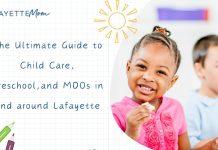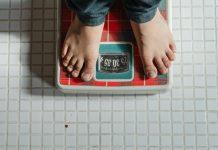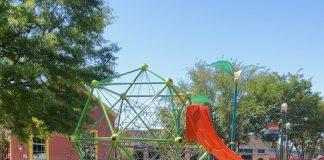Disclosure :: This post is sponsored by Ochsner Lafayette General Breast Center and authored by Shaunda Grisby, MD
Living Your Breast Life: Five Tips to Help Reduce Your Chances of Breast Cancer
Did you know that 1 out of every 8 women (that’s 12.5%) will develop breast cancer in 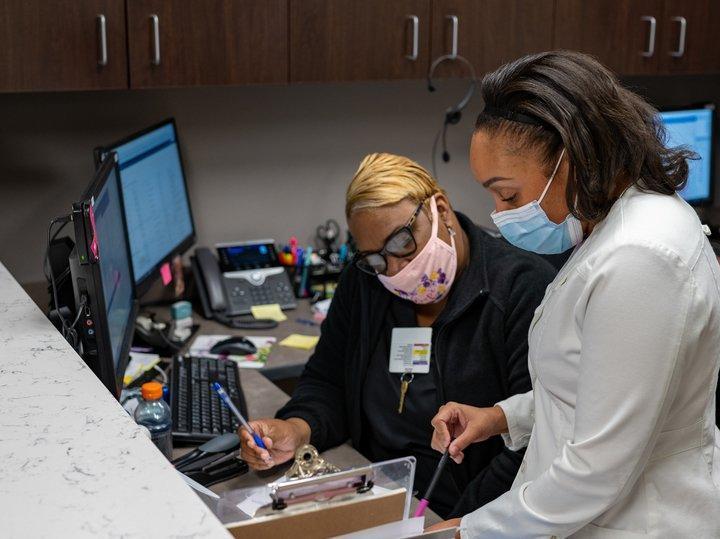 their lifetime? This year alone, an estimated 42,170 women will die from it (and an estimated 520 men, as well). And, while advancements are made every year in the treatment of breast cancer, a woman’s best defense is to take the measures to reduce their risk for developing breast cancer or detect it early enough to prevent its progression to riskier stages.
their lifetime? This year alone, an estimated 42,170 women will die from it (and an estimated 520 men, as well). And, while advancements are made every year in the treatment of breast cancer, a woman’s best defense is to take the measures to reduce their risk for developing breast cancer or detect it early enough to prevent its progression to riskier stages.
In honor of October being National Breast Cancer Awareness month, here are five tips for living your best breast life—and keeping your own personal pair of pumpkins healthy and happy for years to come.
Maintain a Healthy Life
Exercise is good for you—this you know. But just how much is necessary to ward off breast cancer? A recent follow-up study in Cancer, Epidemiology, Biomarkers & Prevention showed that 150 minutes of moderate-level aerobic exercise a week (five, 30-minute workouts) was enough to reduce biomarkers; substances in your body that indicate you have a higher risk of developing breast cancer.
Getting up and working out can also help you maintain a healthy weight, which has been shown to lower your overall risk of breast cancer. And, even if you are overweight, which is a well-known factor for post-menopausal breast cancer—all is not lost! Evidence has shown that losing weight helps reverse that risk into normal levels. In a recent analysis, researchers pooled data from 10 prospective studies involving more than 180,000 women aged 50+. The results showed that those who lost weight had a lower risk of breast cancer than those whose weight remained the same. The effect was greater for those who were overweight and obese—those who lost and sustained their weight loss had the lowest risk of all. But even losing less than five pounds was enough to decrease risk.
Proper nutrition can also play a role in ensuring you’re doing all you can to keep yourself (and by and large your breasts) healthy. While also aiding in weight loss and keeping you energized for exercise, specific vitamins and nutrients are also important for your best breast health:
- Cruciferous veggies like cauliflower and broccoli are rich in I indoles and isothiocyanates, which in studies have shown to inhibit development in several organs
- Turmeric, whose active ingredient curcumin, has been shown to contain significant anticancer properties
- Flax seed, flaxseed oil and oily fish are rich in omega-3 fatty acids and other nutrients that have cancer-protecting benefits and promote skin health
- Leafy green vegetables like kale and spinach contain carotenoid antioxidants, including beta carotene, lutein, and zeaxanthin, which are associated with reduced breast cancer risk
Skip restrictive diets and focus on eating a broad variety of whole foods for optimal nutrition. And when you can’t meet your nutritional needs from your diet alone, opt for supplements sourced from real foods.
Get Really Familiar With Your Breasts
Many experts recommend breast self-awareness over the self-exams of the past. The concept of self-awareness sounds much less formal, but the goal is similar—to thoroughly know your breasts. Most cancers are caught because of symptoms, not these routine exams. Plus, they can incite panic and unnecessary tests.
Being familiar with your breasts and how they change with monthly hormonal fluctuations may help you quickly identify future changes. Most women have natural variations in texture, density and tenderness to their breast tissue, so it’s important to know what’s normal for you.
The point is to be so familiar with how your breasts look and feel that you notice any changes quickly and can get checked out by a doctor as soon as you notice something, just to be sure. And don’t procrastinate! It’s best to catch potential issues as early as possible.
Take a Family History Lesson
A history of breast and ovarian cancers on either side of the family can increase your risk of developing breast cancer. And if you have a strong family history (a first-degree relative such as your mother, sister, or child, or multiple second-degree relatives like a grandmother or aunt), you might consider genetic testing to see if you carry the BRCA gene mutation. Women with a BRCA 1 or 2 gene mutation have a 50 – 85% risk of getting breast cancer in their life—the same goes for men who also have that same mutation, though the likelihood is rarer.
These family connections should be a cause for concern (and genetic testing):
- Having a mother, sister or daughter who got breast cancer before age 40; or having two of these relatives diagnosed before age 50
- Having a father, son, grandfather, grandson or uncle diagnosed with breast cancer at any age
- Having two or more close relatives (parents, grandparents, children, siblings, aunts and uncles) with breast cancer
- Having one close relative with breast cancer and one with ovarian cancer
- Having one close relative with cancer in both breasts
Support Your Gals
If you don’t give your breasts proper support via a proper-fitting bra, that delicate breast tissue will start to stretch and descend sooner that you’d expect. It’s estimated that a whopping 80% of women are wearing the wrong bra size, so get measured for your bras at least once a year (bra size can fluctuate due to weight loss or gain). Plus, make sure your sports bras are up to snuff and look to replace them every six months. If they’re worn out and have lost elasticity, they’re not doing their job.
And, while it’s important you support them and ensure they don’t start wandering down south, you can’t forget to take care of the outside of your breasts, too. Breast skin gets dry, itchy and sensitive—just like the rest of your skin. And because it’s thinner and more delicate than other areas, it’s also prone to wrinkles and crepiness. For the softest skin, moisturize your gals every day and, when your breast skin is exposed, slather on sunscreen to help prevent further breakdown of collagen and elastin from the sun’s damaging rays. Taking care of them completely instead of focusing on one aspect will help keep changes more apparent if and when they do happen and ensure any abnormalities aren’t from a loose bra wire or a weird sunburn.
Get The Screenings You Need – When You Need Them
Every woman is different, so we’ve included both the basic rules by age for protecting your pair and some special circumstances that may require a closer watch.
20s: Clinical breast exam
Get one every three years, according to the American Cancer Society (ACS). Your Ob/Gyn can perform it during your regular appointment.
30s: Clinical breast exam, possible Mammogram or MRI if at higher risk
Continue to get one every three years. If you have a family history of breast cancer—especially in a close relative like a parent or sibling—talk to your physician about when you should start getting regular mammograms or MRIs, as she may want you to start now rather than later. Be sure to tell her not only which relatives have had breast cancer but also at what age they first developed it.
40s: Mammogram and clinical breast exam
The ACS recommends that women get a yearly mammogram screening starting at age 40. Clinical breast exams should now be yearly.
50s and up: Mammogram and clinical breast exam
The ACS recommends you continue to get both of these screening tests annually for the rest of your life. Although some experts do put an upper limit on how late in life you should keep getting your annual mammogram, the ACS advises that all women continue to have one every year throughout their entire lives, just as long as they remain reasonably healthy for their age.
When it’s time for your exam or screening—or when self-awareness brings a cause for concern—reach out to me and the rest of my team at the Ochsner Lafayette General Breast Center. From consultations and care to screenings and cancer treatment, we’re here to ensure your pair are perfectly taken care of at all ages and stages of life.
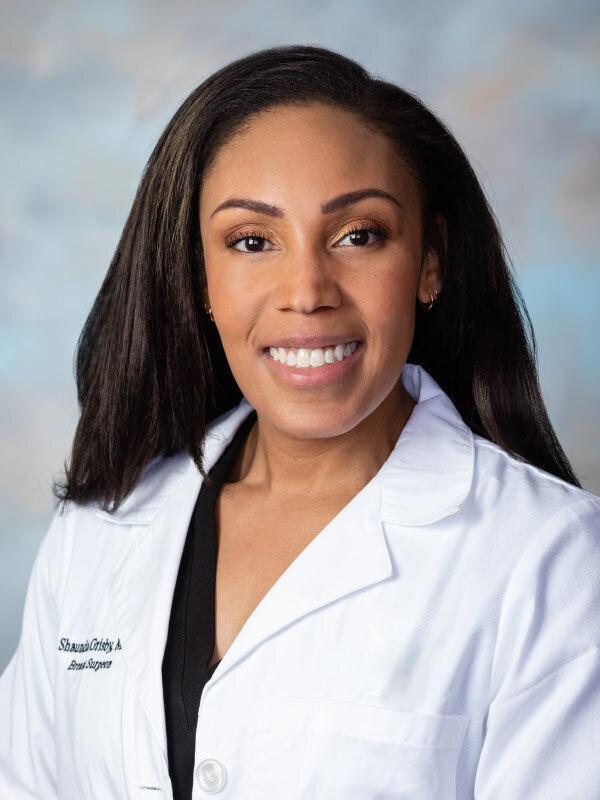 Shaunda Grisby, MD is a surgical oncologist at Ochsner Lafayette General Breast Center. She has been practicing medicine since 2010 and specializes in advanced surgical techniques for the treatment of benign and malignant breast diseases, as well as patients at high risk for breast cancer. Outside of work, she enjoys watching football, reading, music, art, spending time with her family and playing with her two cockapoo puppies. She practices medicine in Acadiana because she loves the people and the culture of the community, and has found a unique need for the services she offers.
Shaunda Grisby, MD is a surgical oncologist at Ochsner Lafayette General Breast Center. She has been practicing medicine since 2010 and specializes in advanced surgical techniques for the treatment of benign and malignant breast diseases, as well as patients at high risk for breast cancer. Outside of work, she enjoys watching football, reading, music, art, spending time with her family and playing with her two cockapoo puppies. She practices medicine in Acadiana because she loves the people and the culture of the community, and has found a unique need for the services she offers.


